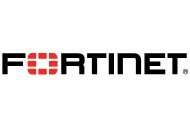There are clear patterns here: Attackers are optimizing for speed, scale, and stealth. Defenders must do the same. Traditional security models that rely on static controls, point-in-time assessments, or delayed patch cycles are increasingly inadequate.
What’s needed is a shift toward Continuous Threat Exposure Management (CTEM):
- Continuously monitor attack surfaces, including cloud, OT, and IoT environments
- Simulate real-world threats using adversary emulation and breach-and-attack testing
- Prioritize vulnerabilities based on risk, threat intelligence, and exploit availability not just CVSS scores
- Automate detection and response to reduce dwell time and accelerate containment
For California government agencies and local utilities, this isn’t a technology conversation; it’s an operations continuity conversation. Cyberthreats no longer wait for vulnerabilities to be exposed. Their reconnaissance efforts monitor all levels of the network, including compromised credentials and other weaknesses available on darknet forums, so they can strike before your team can respond.
Use this report to understand the latest attacker tactics, assess your organization's exposure and prioritize action before the next exploit hits your environment.
To discuss the report, contact us at sled@fortinet.com.








